Pure Math I: Algebra
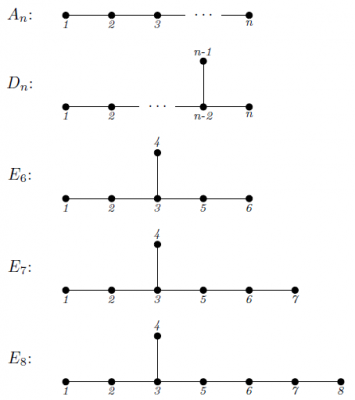
Host: Ryan Schroeder (UConn)
Representing Algebras With Quivers
Abstract: When studying the representations of an algebra A, we want to understand the structure of the category of (right) A-modules, mod A. To this end, it is often helpful to instead study the quiver (or directed graph) associated to A. This quiver perspective allows us to view the pure algebraic problem through a more discrete and combinatorial lens. In this talk, we discuss the equivalence of the categories of modules and representations of quivers, as well as some fundamental results and applications which can be derived from this equivalence.
Pure Math II: Number Theory
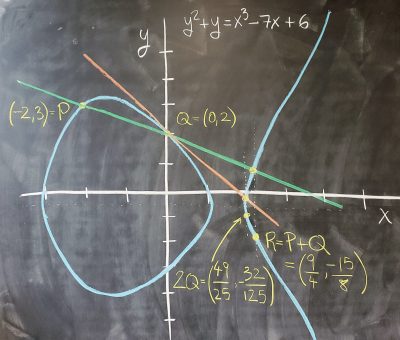
Host: Dylan Costa (UConn)
Elliptic Curves and their use in Number Theory
Abstract: This math talk explores the fascinating world of elliptic curves, shedding light on their fundamental properties and illustrating how their unique structure aids in solving problems within number theory. Throughout the talk, we will gain motivation into why people began to care about elliptic curves, the algebraic structure encoded within them, and how we can use this to answer some problems within Number Theory. Time permitting, we will also look into some real-world applications of elliptic curves within cryptography.
What happened to the Tacoma Narrows Bridge?
Abstract: The Tacoma Narrows Bridge opened on July 1st, 1940 as the world's third-longest suspension bridge by main span, behind the Golden Gate Bridge and the George Washington Bridge. Its eventual collapse just a few months after opening day had a lasting effect on STEM fields. In this talk, we will study a mathematical model to describe the huge oscillations seen before the collapse and discuss numerical techniques to observe the long-term behavior of the solution to the model.
Applied Math I: Mathematical Modeling/Numerical Analysis

Host: Kim Savinon (UConn)
The direct method in the calculus of variations
Abstract: When dealing with nonlinear PDE, it is often useful to reformulate the given PDE in its variational formulation, in which the original partial differential operator is expressed as the derivative of an appropriate energy functional. Solutions to the original PDE then correspond to critical points of this energy functional. There are three main advantages to this variational approach:
- Many laws of physics and other scientific disciplines arise naturally as variational principles;
- Tools from nonlinear functional analysis can be applied to the energy functional;
- It is often easier to look for minimizers of the energy functional than to find solutions to the original PDE directly.
In this talk we will outline Tonelli's Direct Method in the calculus of variations, which gives conditions for the existence and uniqueness of minimizers to functionals defined on general topological spaces.
Applied Math II: Calculus of Variations
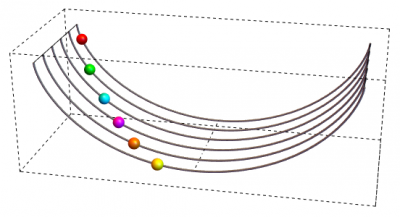
Host: Alec Wendland (UConn)
Pure Math III: Graph Theory
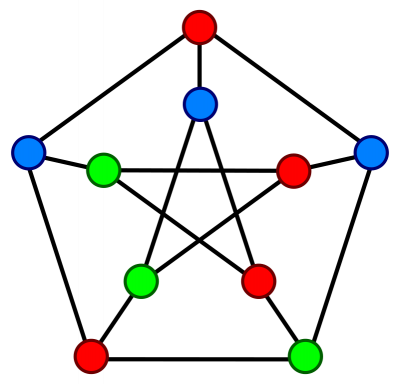
Host: Swati Gaba (UConn)
Graphs and their Use in Real-World Problems
Abstract: In this math talk, we will explore the world of Graphs, shedding light on their basic properties and illustrating how various graph algorithms can be used to solve real-world problems. During the talk, we will ask some motivating questions and discuss how we can model them using graphs.
Pure Math IV: Logic
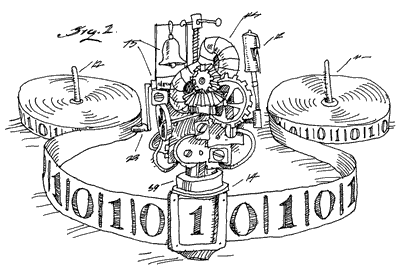
Host: Andrew Delapo (UConn)
How Many Problems Could an Unsolvable Problem Solve if an Unsolvable Problem Could Solve Problems?
Abstract: Computability theory is the branch of mathematical logic focused on which problems in math can -- or cannot -- be solved by algorithms. We say a subset A of the natural numbers is computable if there is an algorithm for determining membership in A. The set of prime numbers is computable since we can write an algorithm which checks whether or not a given number is prime. However, there are plenty of examples of non-computable sets, with the most well-known example being the halting problem. We can additionally compare the complexity of two sets via Turing reducibility: using information about a set A, is there an algorithm for computing the members of B? The resulting structure we get by comparing subsets of the natural numbers this way -- the Turing degrees -- is a fascinating and complex structure about which there are still some open questions. In this talk, we will cover enough computability background to prove one interesting fact about the Turing degrees, known as the Friedberg-Muchnik theorem. The theorem states that there are two non-computable sets A and B which are computable from the halting problem but which do not compute each other.
Insurance and Portfolio Optimization
Abstract: Consider an investor who can invest and trade in a financial market consisting of a risky and risk-free asset, and who is exposed to an insurable loss. The investor seeks the optimal asset allocation, consumption, and insurance strategies to maximize their expected utility while facing competing objectives: current consumption reduces future utility; investing in risky assets might yield high returns but also high losses; purchasing insurance is costly and reduces utility that could be derived from saving or consuming, but it also protects the investor from absorbing a large loss in the future. In this talk, we look into the application of Stochastic Control theories in Actuarial Science and Insurance Economics to find optimal strategies for this portfolio problem.
Applied Math III: Actuarial Science

Host: Yi Wu (UConn)
An Introduction to the Heisenberg Group
Abstract: We will introduce the Heisenberg group, which is an example of a sub-Riemannian manifold. The Heisenberg group consists of the familiar set R^3 equipped with a non-commutative group operation. We will discuss how to define analogues of geometric concepts from Euclidean space, such as translation and dilation. The space also admits a natural notion of volume and distance, both of which are defined to be compatible with translations and dilations. Although the distance function is non-Euclidean, the volume function coincides with the usual volume on R^3. As a consequence of this, H^1 has Hausdorff dimension equal to 4, and the volume of a ball of radius r is a constant multiple of r^4.
Applied Math IV: Analysis
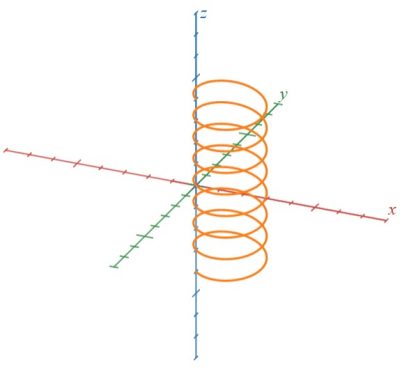
Host: Surath Fernando (UConn)
Poster Abstracts:
| p-Adic Valuation Trees and Iterative Sequences by Dillon Snyder (UConn) | In number theory, p-adic analysis provides tools to study the divisibility of numbers in an interesting way. The p-adic valuation of an integer is the largest power of some prime p that divides the given integer. A p-adic valuation tree is a visual aid that allows us to represent a generated sequence of valuations. We investigate how nodes split on a variety of trees, such as those formed from a product of linear or lower degree polynomials and from iterative mappings of linear functions. We describe the infinite branches of these polynomial trees and the valuations of their terminating nodes. For iterative mappings, we conjecture their behaviors, whether the sequences of valuations are constant, periodic, or unbounded, depending on the coefficients and initial values of the linear function. | |
| Defects, graphs and route-finding: Probing ion transport using time-based centrality by Konrad Sebastian Gomez-Haibach (Worcester Polytechnic Institute) | Ion conduction through a material can be represented as movement through a graph where each vertex corresponds to an ion-binding site and the edges correspond to single, bidirectional transitions between sites. Site probabilities indicate the likelihood of propagating conduction from a particular site while the rate constant for transition between sites (k_{i,j}) indicates the speed of motion between sites. While our research group has developed time-based centrality measures [1] which highlight traps and conduction highways in a single picture, an ion graph. Until now, we have only applied these to fully ergodic complete graphs where all vertices are available and reachable from any vertex. This poster considers time-based centrality measures in systems where a site is blocked by another conducting ion. These scenarios are typical when there are multiple conduction ions and correlation between ion motions are expected. The three most commonly used centrality measures in network theory have been adapted to consider ion conduction time rather than number of steps. [2] [1] RA Krueger, FG Haibach, DL Fry, and MA Gomez. Centrality measures highlight proton traps and access points to proton highways in kinetic monte carlo trajectories. Journal of Chemical Physics, 142:154110, 2015. [2] Konrad Gomez-Haibach and Maria Alexandra Gomez. Revised centrality measures tell a robust story of ion conduction in solids. J. Phys. Chem. B, 127(43), 2023. | |
| Ramsey Properties of Integer Sequences by Oscar Quester (Bridgewater State University) | We call a subset D of the positive integers r-accessible if every r-coloring of the positive integers admits arbitrarily long monochromatic sequences where the difference between consecutive terms in the sequence belongs to D. We wish to characterize when a set is r-accessible for various values of r. A powerful extension of Van der Waerden’s Theorem tells us that any set that is generated by a polynomial with rational coefficients is r-accessible for every r. For sets not generated by a polynomial, the question of whether or not the set is r-accessible is far more open. We are able to show that any set whose terms grow sufficiently fast is not r-accessible. A consequence of this fact is that the growth rate of the Fibonacci sequence alone is enough to tell us that the set of Fibonacci numbers is not 4-accessible. | |
| The Game of Cycles on Odd-Spoke Wheel Graphs by Alessio Campione (Iona University) | The Game of Cycles is a newly described combinatorial game (Su,2020). It is a 2-player game played on a connected planar graph in which players take turns marking edges with arrows in the attempt to create a cycle cell while following a sink-source rule. We focus on which player had the winning strategy on Wheel Graphs. These are a family of graphs formed by connecting all vertices of a cycle graph to a new vertex in the center of the graph. While some of these wheel graphs had previously been solved, we found winning strategies for the previously unsolved 5-Spoke and 7-Spoke Wheel Graphs. We also describe some strategies that can be used to further explore Odd-Spoke Wheel Graphs. | |
| Approximation of Laplacian Operators by Tonya Patricks (University of South Florida) and Genevieve Romanelli (Tufts) | Algorithms involving Laplacian eigenmaps are commonly used for dimension reduction in big data and machine learning settings. However, despite their wide-ranging applications, the theory behind these dimension-reduction algorithms is not complete. Using the methods of Gin\'e and Koltchinskii (2006), inspired by Belkin and Niyogi (2005), we analyze the behavior of several graph Laplacian operators on points chosen from the interval [-1,1]. In particular, we compare these operators with the continuous averaging operator $(\mathcal L _\varepsilon f)(M) = \frac{1}{2\varepsilon}\int_{M-\varepsilon}^{M+\varepsilon} f(M)-f(x) dx$. We then expand our study's results to consider other generalized measures and their properties of convergence. | |
| Basic Strategy for Some Simplified Blackjack Variants by Basmalah Asad (University of Hartford) |
In this presentation, we calculate a basic strategy for several variations of a simplified version of Blackjack. In short, for these variants the player has only the two options of hit or stand, and they may only make one decision. We explain how our program determines the correct decisions that make up our basic strategy table.
|